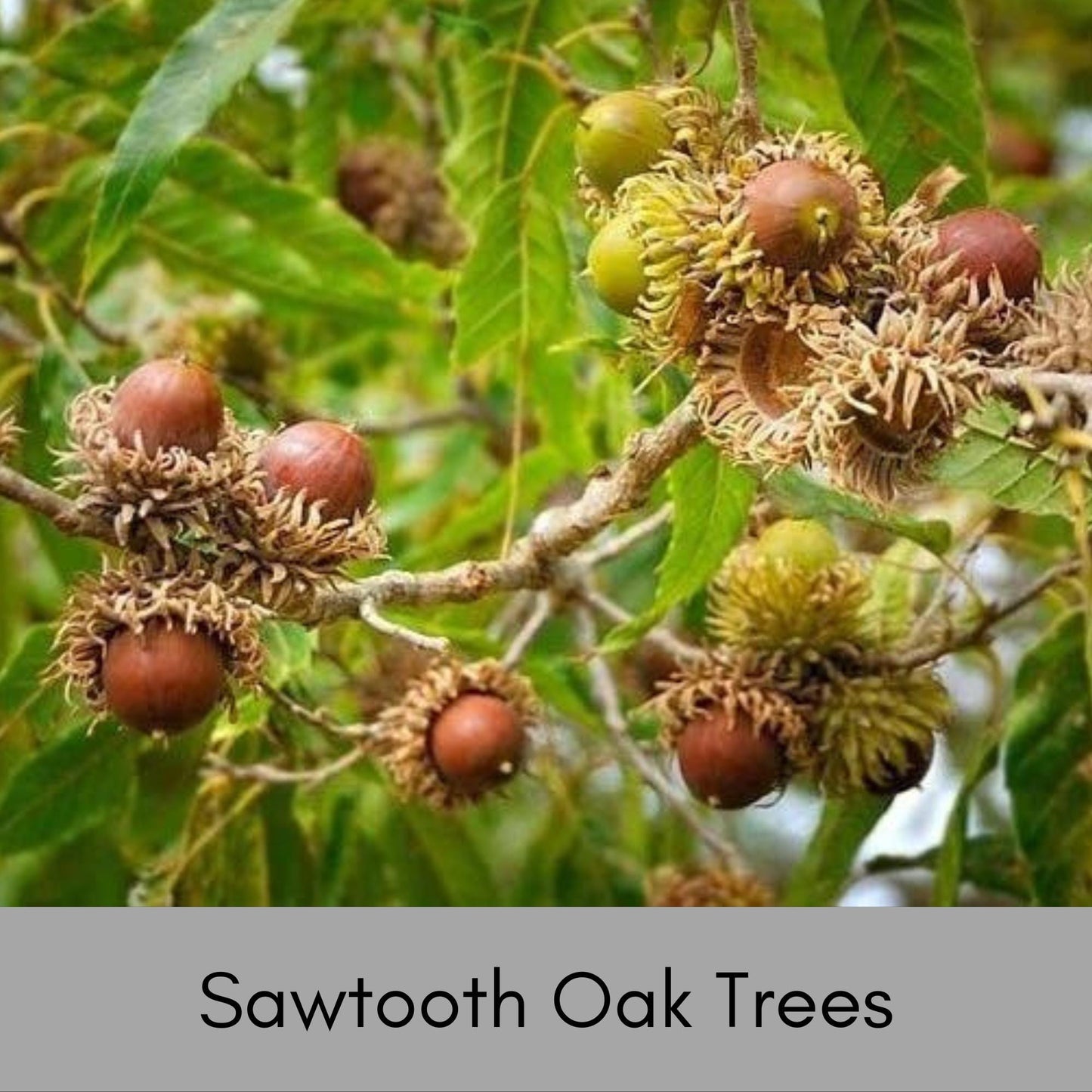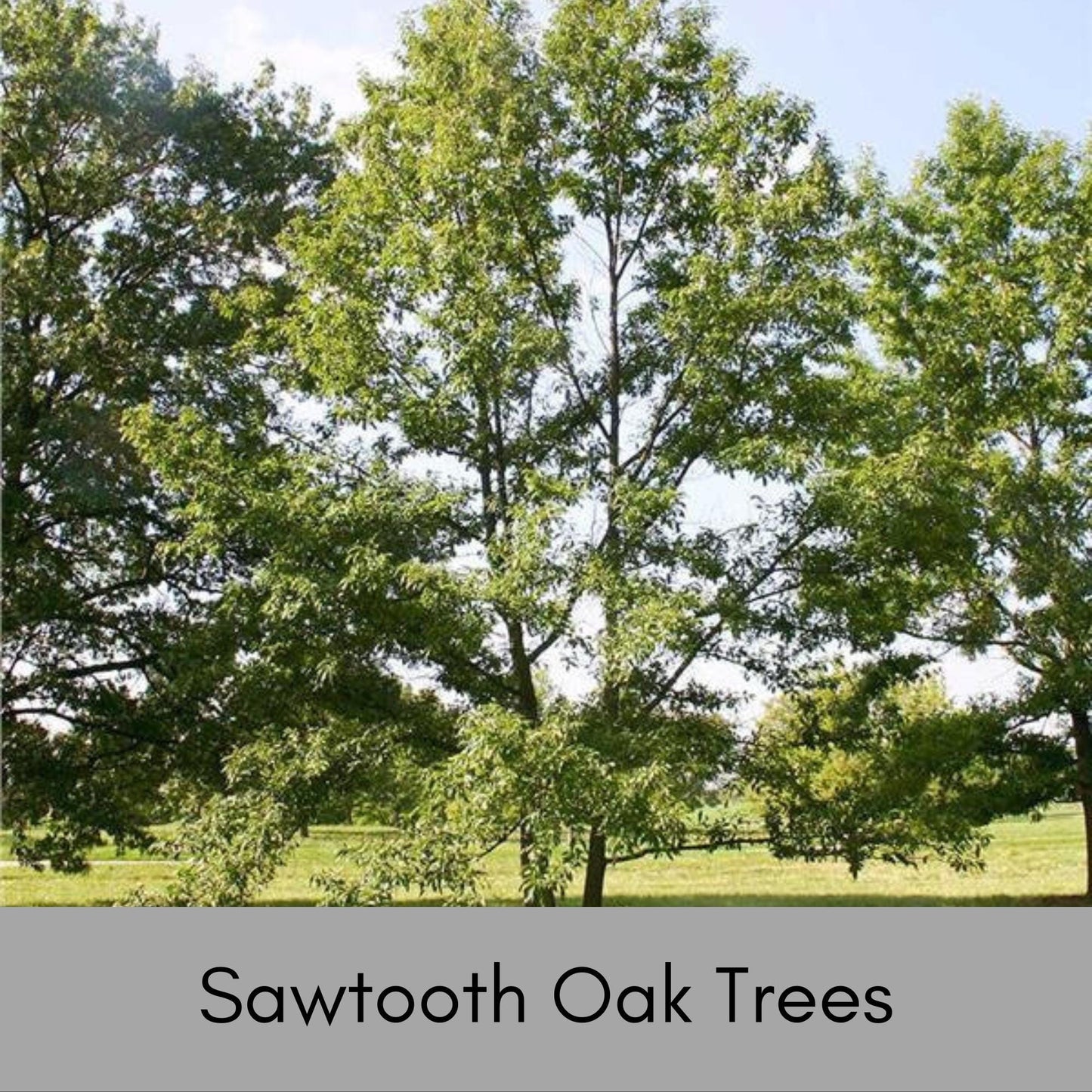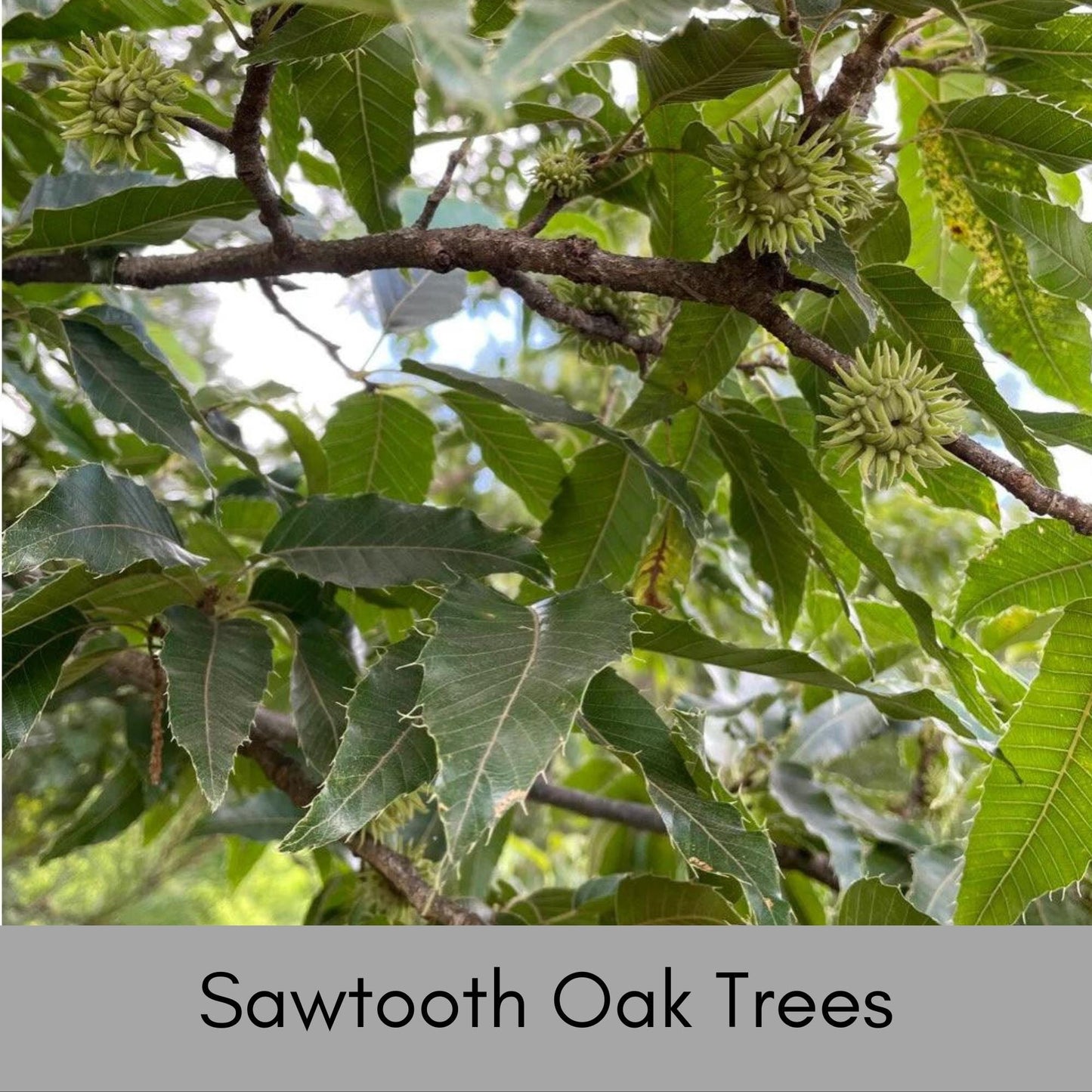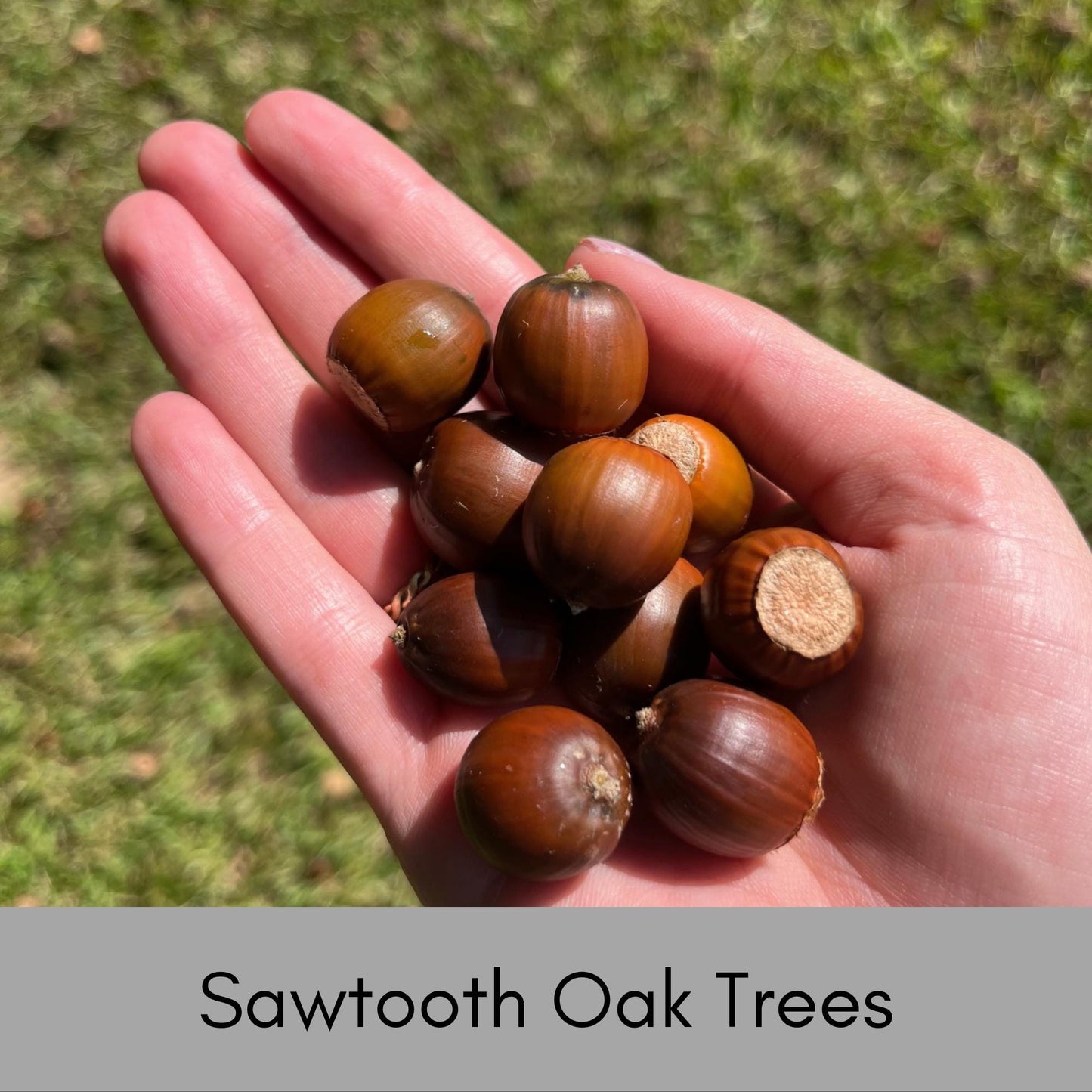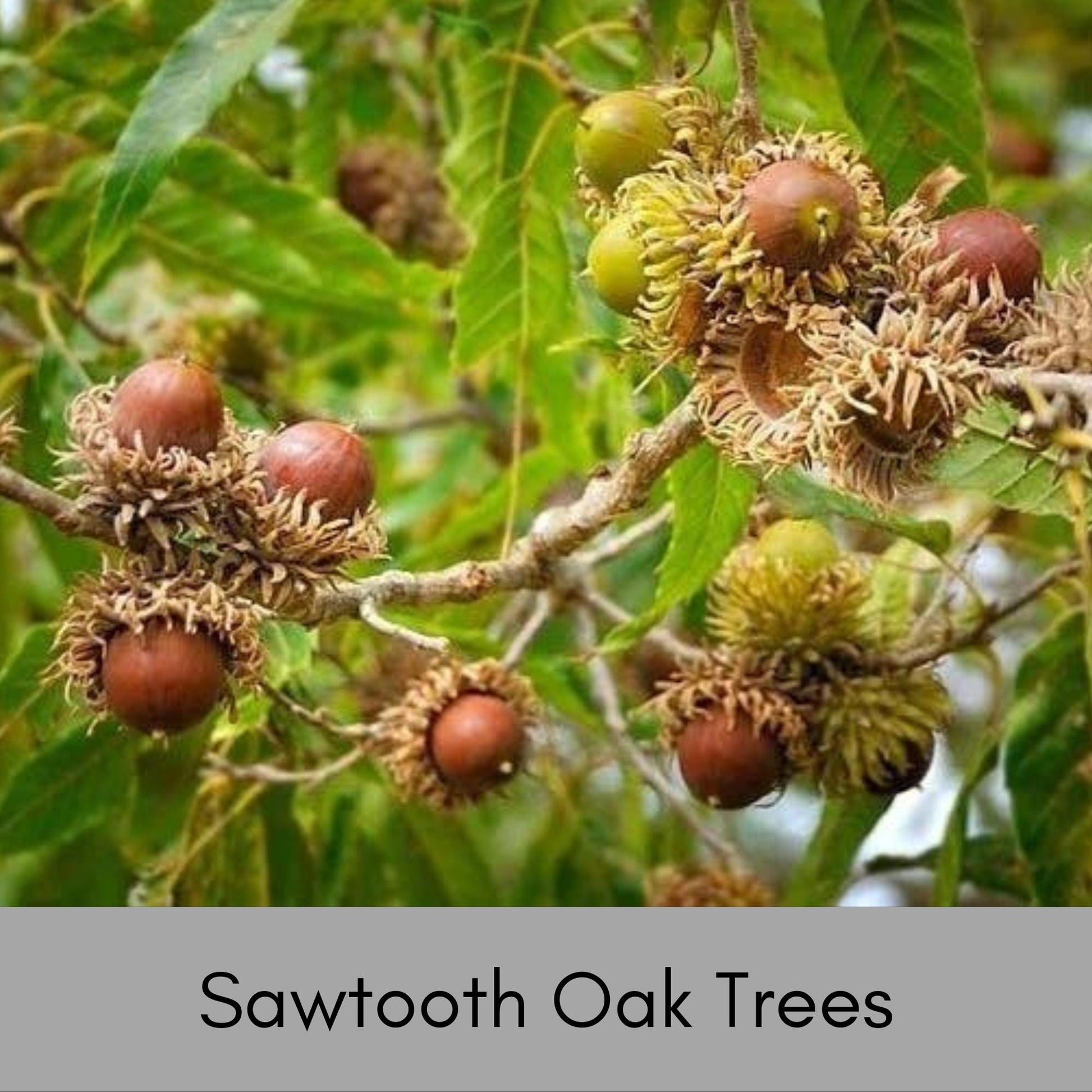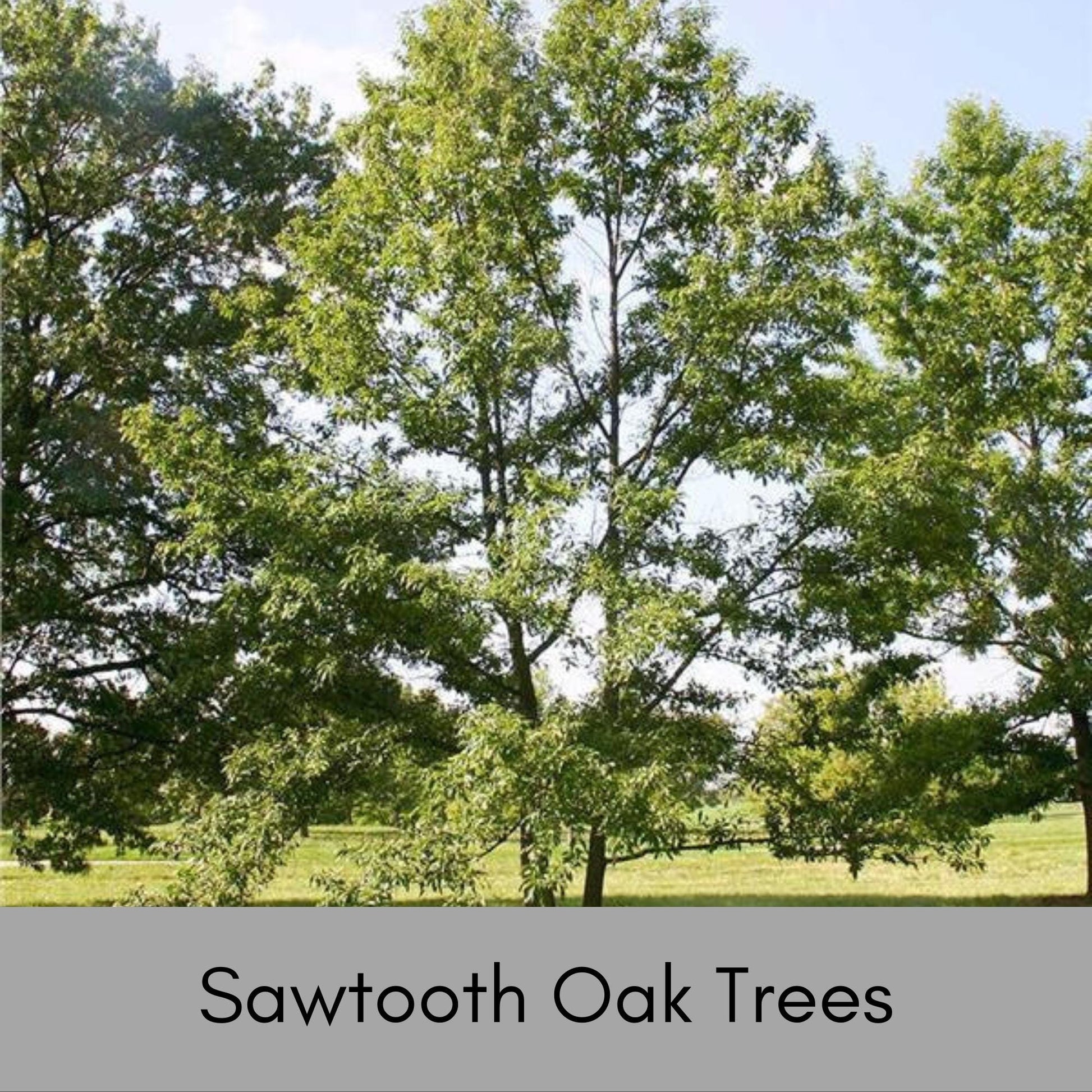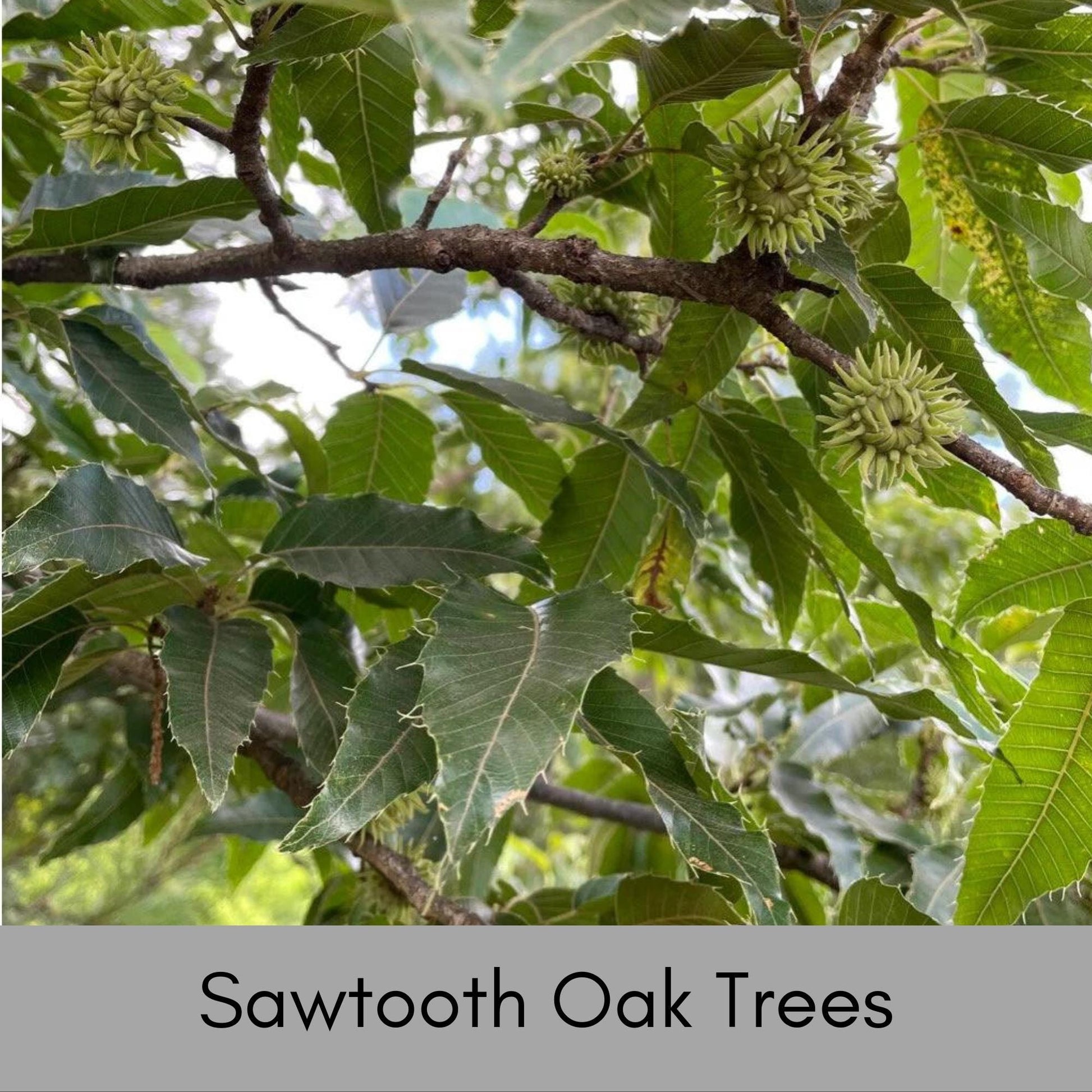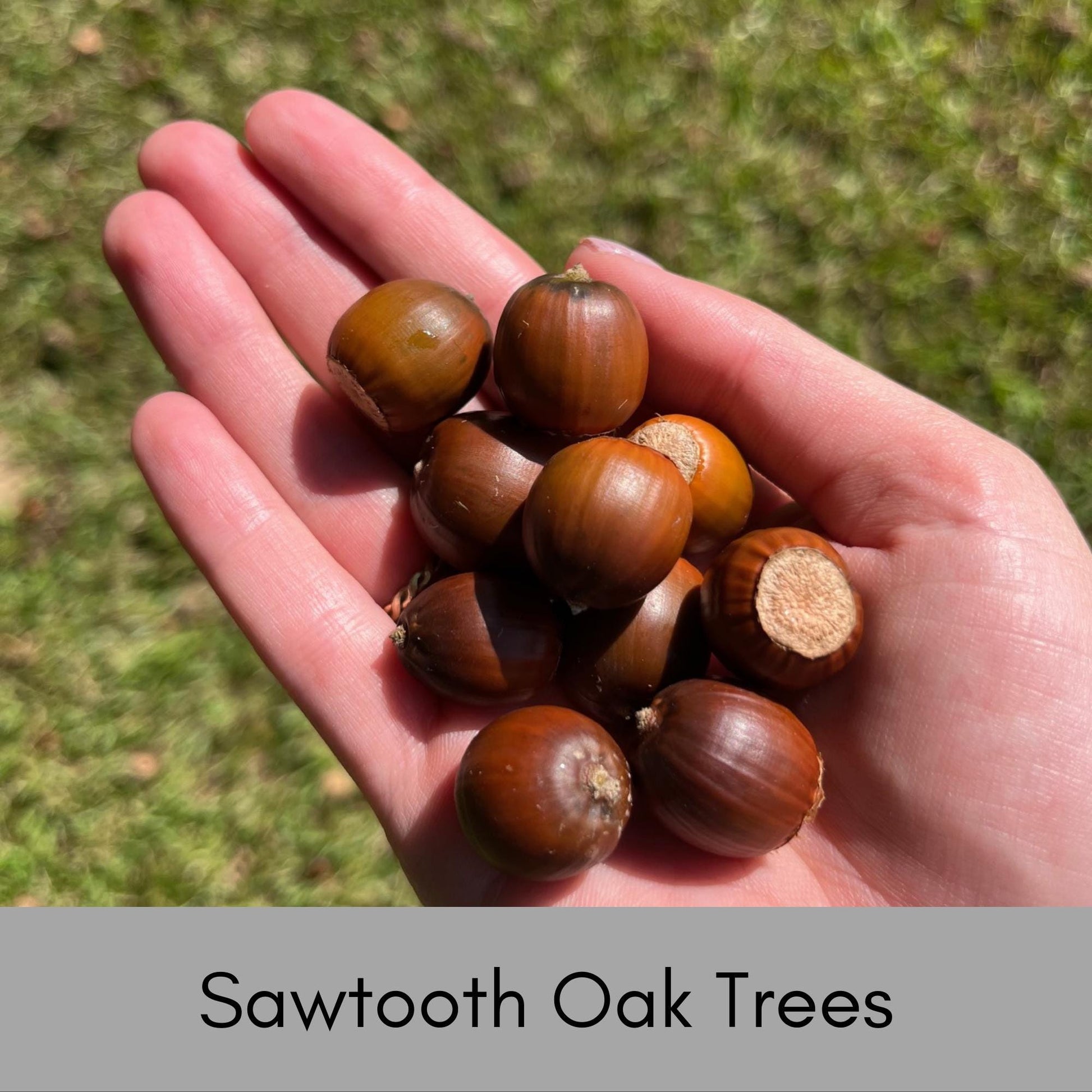Gobbler Sawtooth Oak | Quercus acutissima var. Gobbler
Gobbler Sawtooth Oak | Quercus acutissima var. Gobbler
Couldn't load pickup availability
The Gobbler Sawtooth Oak (Quercus acutissima var. Gobbler) is a fast-growing, wildlife-friendly oak tree that produces an abundance of smaller acorns, perfectly sized for wild turkey, deer, and other game. Known for its rapid acorn production (often within 5–6 years), the Gobbler Sawtooth is a favorite among hunters, landowners, and conservationists looking to improve habitat and attract wildlife.
This hardy oak thrives in a wide range of soils, tolerates drought once established, and grows into a beautiful, broad-spreading shade tree. Its serrated, chestnut-like leaves turn golden in the fall, adding seasonal interest to your landscape.
- Growth Rate: Fast
- Mature Height: 40–60 feet
- Mature Spread: 40–60 feet
- Wildlife Value: Heavy acorn producer, highly attractive to turkey, deer, and squirrels
- Soil & Light: Adaptable; prefers full sun and well-drained soil
- Hardiness Zones: 5–9
Whether you’re planting for wildlife, reforestation, or simply a long-lasting shade tree, the Gobbler Sawtooth Oak is a proven performer.
Share
